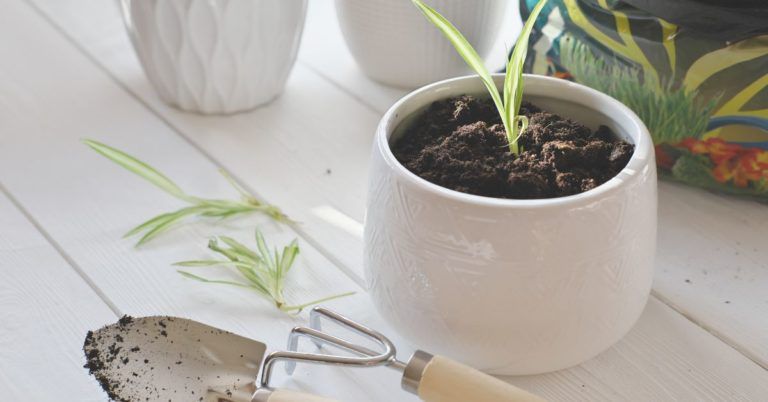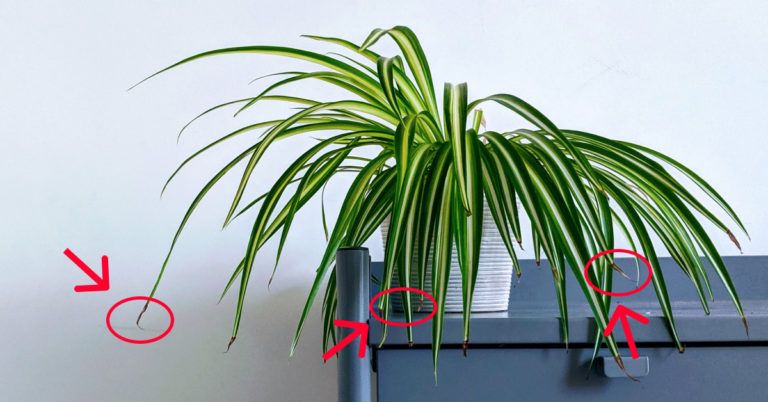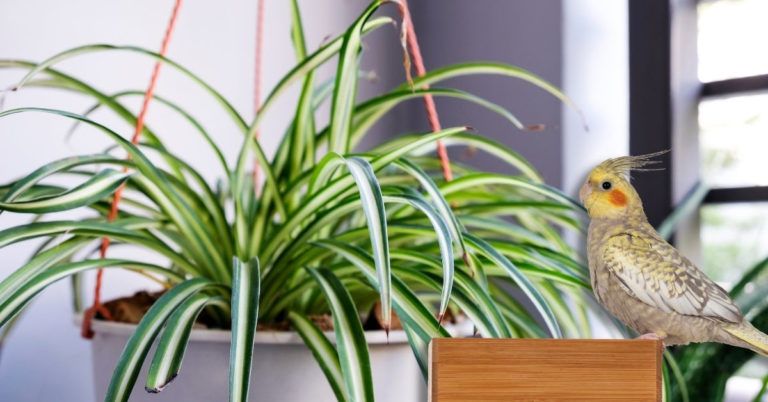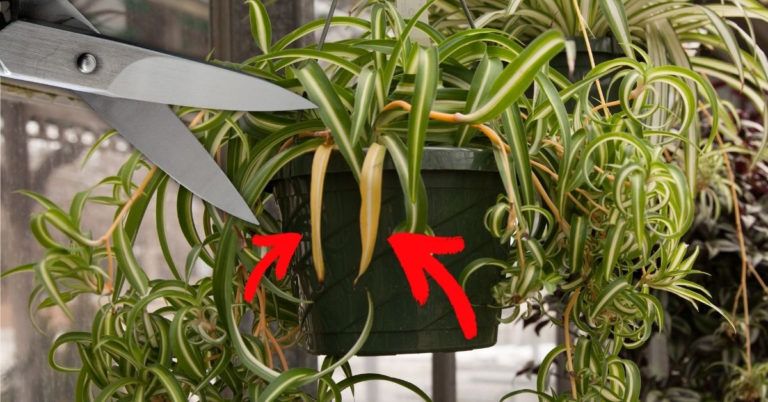Can a Snake Plant Live Outside? (Answered)

A friend of mine wanted to know if her snake plant would grow outdoors.
She had read about the plants and thought they’d be perfect for the outdoor porch she was planning on decorating this summer.
If you are like my friend, you may be wondering, “Can a snake plant live outdoors?”
Here’s the truth: your snake plant can live outside as long as the temperature is right and you give it the right amount of water and light.
Since snake plants are tropical plants, they do well in warmer temperatures.
So while your snake plant may not be happy spending the winter outdoors, it will be fine in the summertime.
While a snake plant can live outside, there are a few things to keep in mind to ensure your plant stay happy and thriving.
Keep on reading to find out how to help your snake plant thrive in outdoor environments.
Can Snake Plants be Outside?
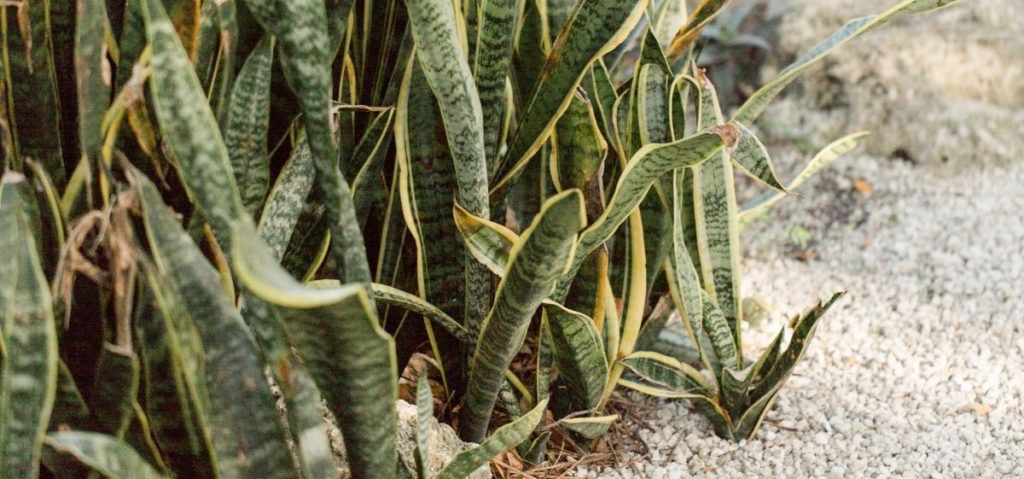
We all know that snake plants are easy to grow and highly resilient. It’s for this reason that they’re so popular among so many houseplants.
Question is: Can snake plants be outside?
The answer is yes, a snake plant can be grown outside of your house. As long as you can provide them with the right amount of light, water, and heat, they can thrive outside in any outdoor environment.
In fact, snake plants live outside in their natural habitat, so it should come as no surprise that they can live outside in the comfort of your home too.
However, you need to remember that snake plants are native to the tropical and sub-tropical regions of the world.
Why is this important?
Well, this is basically telling you that they might not be able to withstand cold winters in your area.
In other words: if you live in a cold climate, it’s unlikely that your snake plant will survive outdoors.
If your area has a cold winter, your snake plant will likely suffer from low temperatures.
In fact, the average temperature outside in winter is around 45 degrees Fahrenheit. This is far too low for a snake plant to thrive.
So, what’s the bottom line?
Yes, your snake plants can be outside as long as you don’t reside in a cold region. The snake plants will do great outside throughout the other seasons, but you must remember to bring them inside during the winter.
Also read: Beginner Snake Plant Care: How to Care for a Snake Plant
Can a Snake Plant Survive a Freeze?
No, a snake plant will not survive a freeze. When a snake plant is exposed to freezing temperatures, its leaves turn mushy, and its stems become brittle.
The freezing temperature can even cause your snake plant to die.
So, if you live in an area where temperatures regularly drop below 50 degrees Fahrenheit, you need to bring your snake plant indoors during the cold season.
You’ll want to do this because you don’t want to risk the plant’s life by allowing it to stay outdoors when the temperature dips below freezing.
Also read: Do Snake Plants Like Humidity? How to Keep Your Snake Plants Happy
What Happens If a Snake Plant Gets Too Cold?
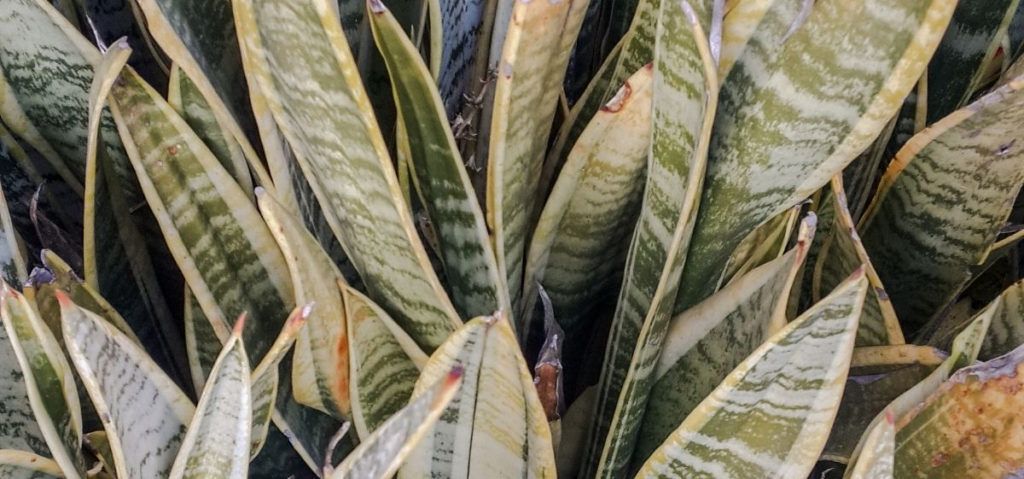
Your snake plant will stop growing and eventually die when it gets too cold.
The cold will freeze the cells of your snake plant, disrupting the flow of nutrients and water.
That is why your snake plant will stop growing and start looking pretty sad.
In fact, the roots of your snake plant will actually start to rot and turn mushy if they’re not protected from the elements.
That is why it’s crucial that you pay attention to your snake plants outside, especially during the cold season.
If your snake plant is exposed to temperatures below 50 degrees Fahrenheit for too long, it can be permanently damaged by the cold weather.
In short:
A snake plant can’t stay outside in winter. The cold will freeze your plant and cause it to die from the low temperature.
So make sure you bring your snake plant indoors during the winter months.
What Temperature Can a Snake Plant Withstand?
Snake plants can withstand a wide range of temperatures outside.
In fact, they are one of the most popular houseplants because they have a long lifespan and thrive in both indoor and outdoor environments.
As a general rule of thumb, you don’t want to expose your snake plant to temperatures below 50 degrees Fahrenheit as it might damage your plant.
Since snake plants are tropical plants, they tend to do better in warmer conditions that are between 70 – 90 degrees Fahrenheit.
According to some reports, your snake plant can withstand up to 90 degrees Fahrenheit, but anything higher can damage their leaves.
They typically live in warm and humid environments, so it’s important to make sure that both the plant’s roots and soil are kept moist at all times.
Can Snake Plants be in Direct Sunlight?
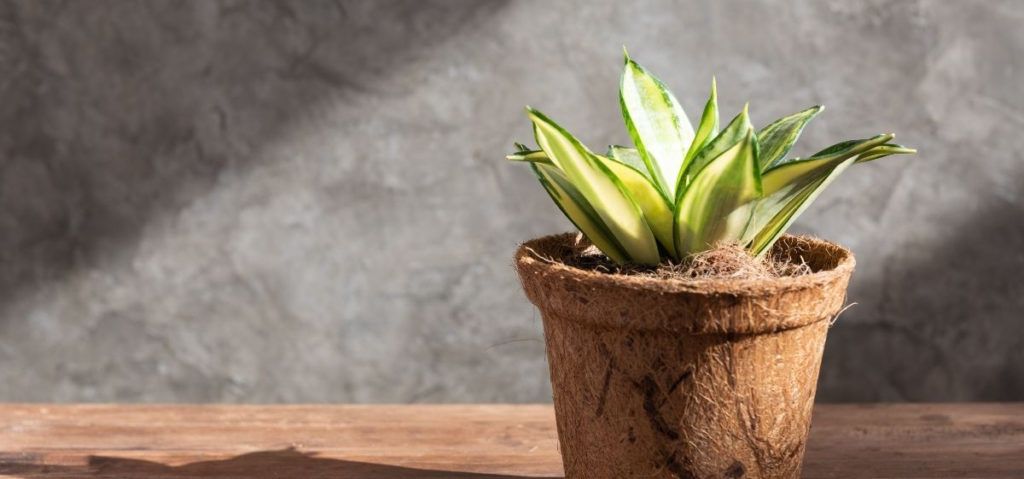
Snake plants, also known as mother-in-law tongue or viper’s bowstring plant, are often kept in indoor settings because they’re not tolerant of direct sunlight.
When exposed to indirect light for an extended time, your snake plant may get sunburned.
However, the snake plants can be easily brought outside. They will thrive when given bright indirect light or even some direct sunlight.
It is important to take the time to acclimate snake plants slowly before exposing them to full sun for too long.
If you want to keep your snake plant outside during the summer months, you’ll want to use a shade structure so that the plant can get adequate sunlight without receiving direct sunlight.
How do You Take Care of an Outdoor Snake Plant?
Snake plants are popular indoor plants that can be grown outdoors.
They typically grow well in containers, but some specific care is required when you want to take your snake plant outside and keep it alive.
When caring for an outdoor snake plant, consider these tips:
First, consider the light conditions of your area.
Whether you live in an urban or rural environment will determine how much sun the snake plant needs to thrive.
Sunlight varies greatly depending on where you live, so make sure you plan for that.
Remember to not expose your snake plant to direct sunlight for too long.
Then, you can use a pot with a drainage hole to keep the soil moist and avoid water from pooling in one area of the container.
A deep pot also prevents roots from growing out of the drainage holes, leading to rot or root damage.
Finally, your snake plant will survive outside, but it’s best to monitor the outdoor temperature before finally moving it out.
It should be fine as long as the temperature is above 50 degrees Fahrenheit.
But if the temperature is below 50 degrees, your snake plant will be susceptible to frost damage.
Also read: Do Snake Plants Need Drainage Holes? (Explained)
Conclusion
So, can a snake plant live outside of the house?
Yes, your snake plant can be outside of the house, but you’ll need to make sure that you take special care when growing it outdoors. It’s important to take into account the weather conditions of your location.
And if you do decide to grow a snake plant outdoors, make sure that the temperature does not drop below 50 degrees Fahrenheit.
Otherwise, the cold temperatures could damage the leaves and roots.
So there you have it. I hope this post answers some of your questions about whether or not your snake plant can live outdoors.
Now that you know the basics go ahead and plant your snake plant outside.
I’m sure that you will love the change of scenery and you will be happy to have it in the backyard.
And now I’d love to hear from you:
Have you ever seen a snake plant outside? Or are you planning on growing one?
Please share your thoughts in the comments section below.
If you are looking for more information about houseplants, check out our blog post on how to care for houseplants.
Until then, happy gardening!
